Your cart is currently empty!
Drifting Through Color: The Magic of Southeast Asia’s Floating Markets
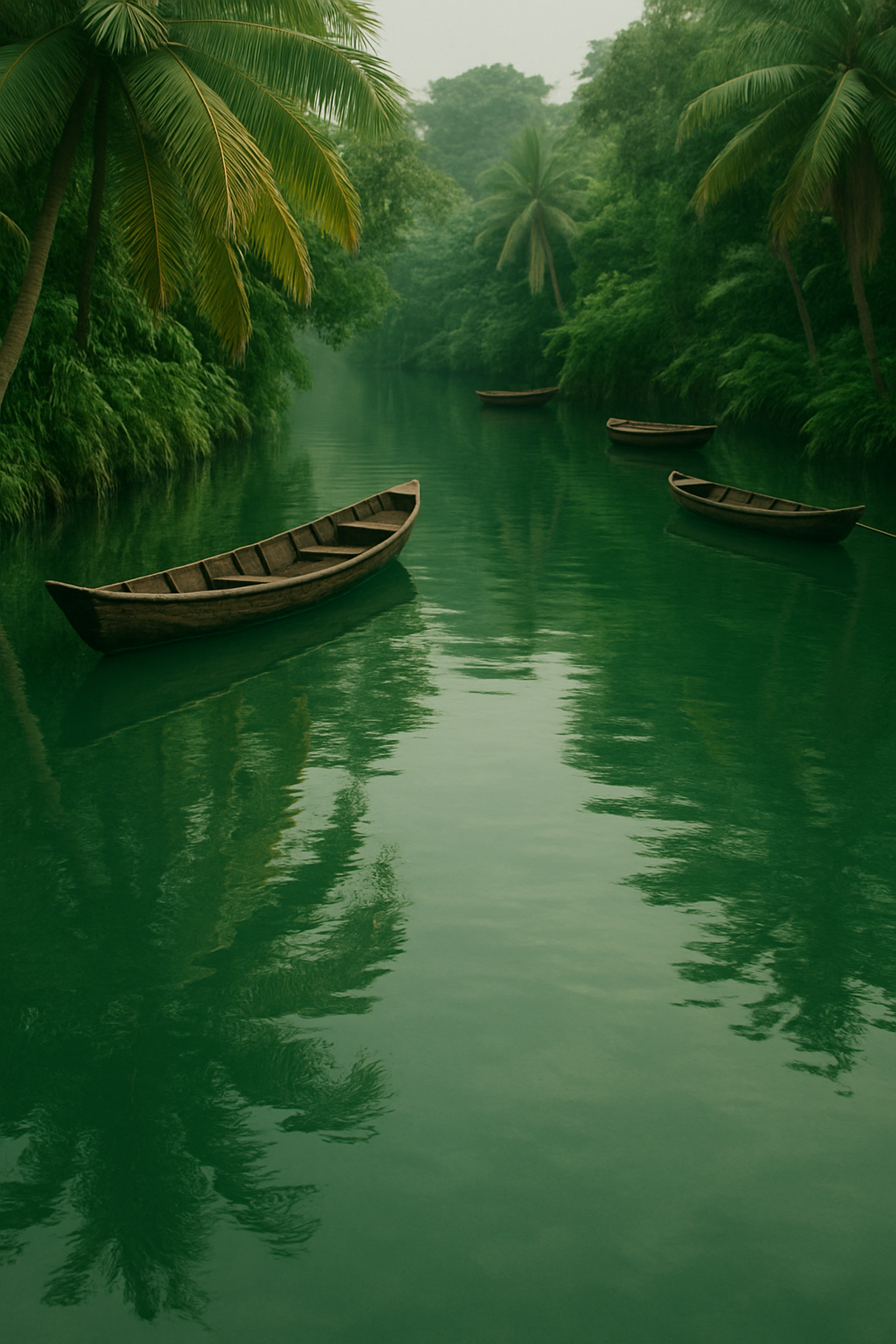
There are few places on Earth as mesmerizing as the floating markets of Southeast Asia. Here, life flows on water. Boats laden with fruits, flowers, and spices glide along narrow canals framed by dense green palms. Vendors in wide-brimmed straw hats call softly to passing travelers. The air is thick with the scent of mangoes and jasmine, and the sound of gentle paddling mingles with laughter and conversation.
The image before you captures this perfectly: long wooden boats, heavy with produce and blossoms, drifting through a canal that looks like a dream made real. The scene is at once timeless and alive — a snapshot of daily life that feels more like a painting than a photograph. Bright yellows, greens, and pinks burst from every direction, reflected in the dark green water like brushstrokes of color and culture.
This is not just commerce; it’s connection. These floating markets have existed for centuries, long before bridges and roads reshaped the region. They are living traditions — part marketplace, part meeting place, part moving art. And to experience one is to step into the heart of Southeast Asia’s soul, where water and life flow as one.
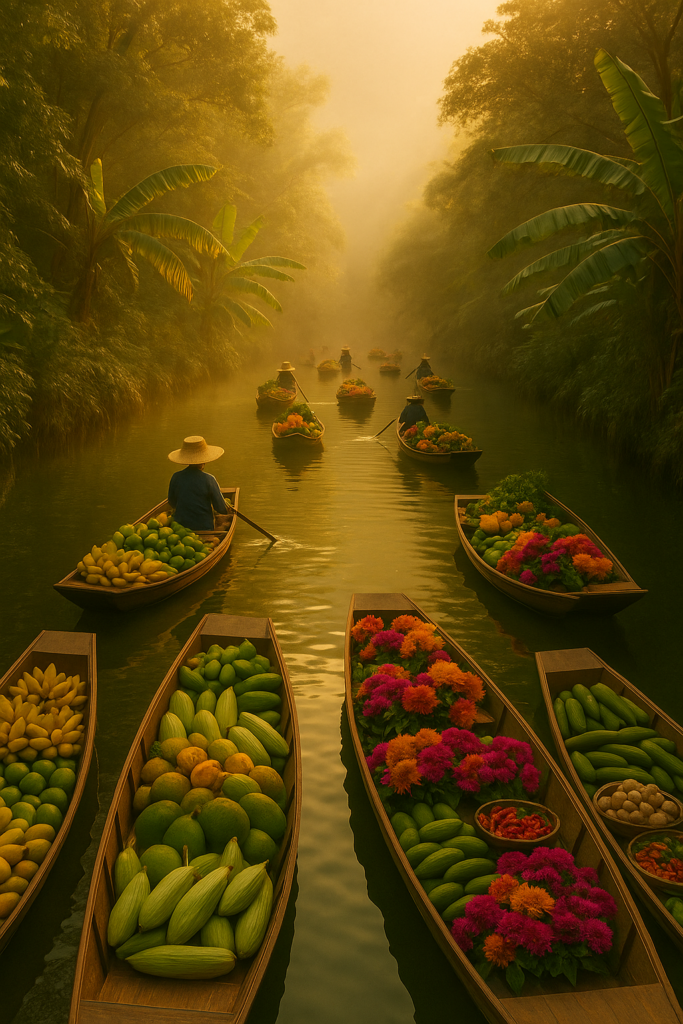
Where Water and Life Meet
In places like Thailand, Vietnam, Indonesia, and Cambodia, rivers are not boundaries — they are lifelines. For generations, people have lived by the water, grown their food along it, and traveled upon it. Floating markets were born naturally from this way of life. When roads were few and rivers were everything, boats became shops. Families rowed their produce from farms to canalside towns, selling directly from their canoes.
Over time, these markets grew into bustling centers of community. Even today, in places like Damnoen Saduak and Amphawa in Thailand or Cai Rang in Vietnam, hundreds of wooden boats gather at dawn, piled high with coconuts, bananas, papayas, and flowers. The water ripples with color and sound. Bargaining, gossip, and greetings echo across the canals.
The image captures the quiet side of that rhythm — a procession of boats moving in harmony through a lush green corridor. The light filters softly through the canopy, illuminating the produce like treasure. It’s peaceful, yet you can almost hear the life within it. This is the heart of the floating market: vibrant, slow-moving, eternal.
The Language of Color
Color is the floating market’s poetry. Look closely at the image — every hue tells a story. The bright yellows of bananas and lemons, the deep greens of cucumbers and jackfruit, the fiery reds of chili peppers, and the fuchsia of tropical blossoms — all merge into a symphony of natural beauty.
In Southeast Asian culture, color is not decoration — it’s meaning. Green represents abundance and growth. Yellow and gold signify good fortune. Red is life, energy, and celebration. Flowers, often sold alongside fruit, are used in offerings, temples, and homes — a daily connection to spirituality.
The boats in this scene seem choreographed, each one carrying a palette of nature’s best work. The vibrant produce and flowers stand out against the still water, creating a striking contrast that feels both joyful and sacred. You can almost smell the sweetness of ripe mangoes, the sharp scent of citrus, and the earthy freshness of herbs piled high in woven baskets.
It’s a celebration of simplicity — a reminder that beauty often hides in the ordinary moments of everyday life.
The Floating Market Experience
To truly understand a floating market, you have to experience it — not as a tourist snapping pictures, but as a participant. You arrive early, when the mist still lingers over the canal and the first light touches the water. The air is cool and filled with the sounds of paddles dipping rhythmically into the river. Vendors call out softly in local dialects, offering fruit, noodles, or even steaming cups of coffee poured straight from a floating kitchen.
The boats are narrow and long, designed to balance on the calm currents. Some are family-run, passed down through generations. Children learn to row almost before they can walk. The entire market moves with gentle grace — no engines, no noise, just the sound of water and trade.
You can drift alongside a vendor selling mango sticky rice or fresh coconuts, watch a woman arrange flowers with the precision of an artist, or see a man carefully stack pineapples into perfect pyramids. Every interaction feels personal, human, alive.
The image captures that feeling — the closeness of the boats, the care in how the produce is arranged, the unhurried pace of it all. It’s a different kind of commerce, one rooted in rhythm rather than rush.
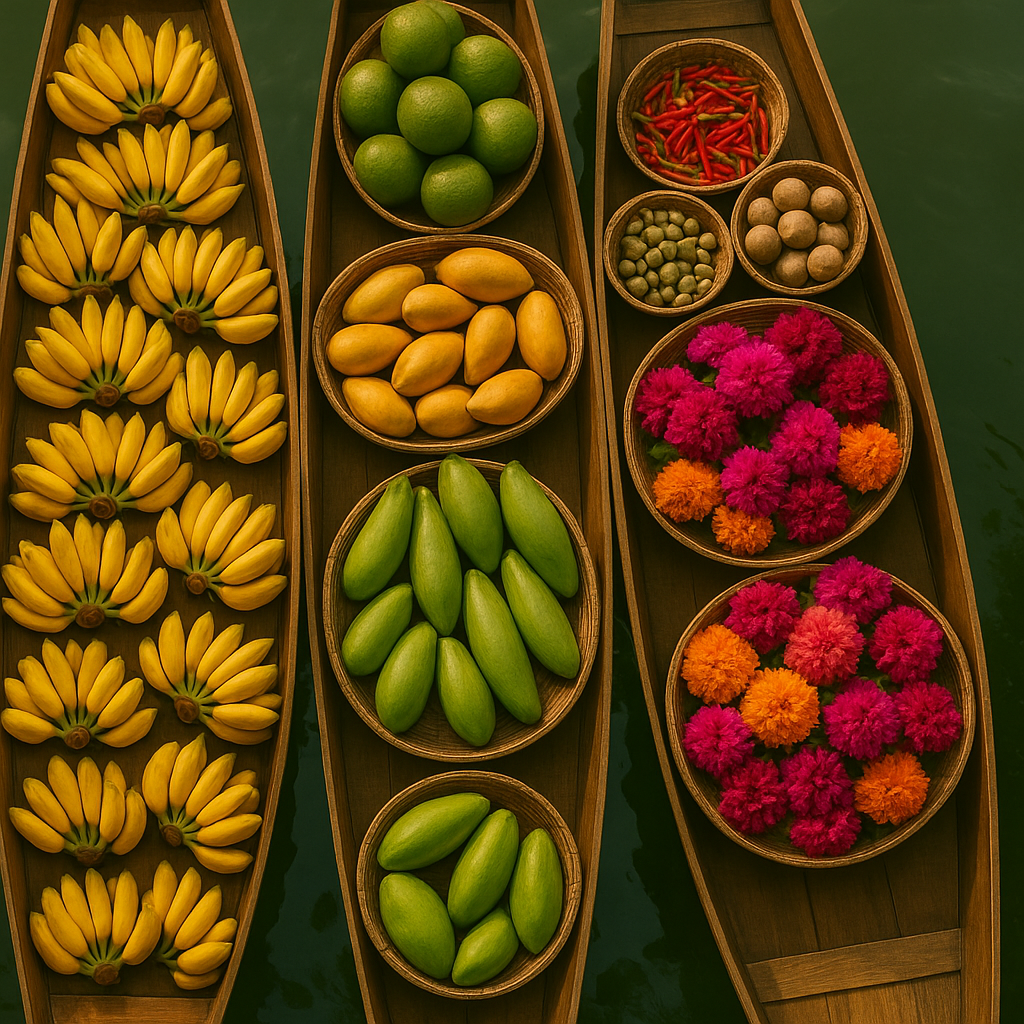
Nature’s Market
Floating markets are not just cultural wonders — they’re ecological miracles. Everything here depends on balance. The water that carries the boats also nourishes the farms. The surrounding greenery filters the air and shades the canals, creating microclimates perfect for tropical crops.
In this image, the lush vegetation on both sides forms a natural tunnel, cradling the boats in a world of green. Banana leaves arch overhead like nature’s cathedral. The water below reflects both the sky and the forest, turning the entire scene into a mirror of life.
This connection between land and water is central to Southeast Asian living. It’s sustainability before the word became fashionable — a system where nothing is wasted and everything flows. The wooden boats, handmade from local materials, last for decades. The produce is grown nearby, transported without pollution, and sold directly. Even the waste — peels, leaves, stems — returns to the earth.
Every piece of the picture fits together: the green of the crops, the gold of the sunlight, the deep brown of the boats, the shimmering jade of the water. It’s a perfect circle, quietly sustaining communities for centuries.
A Culture of Connection
What makes floating markets so magical isn’t just the scenery — it’s the spirit. The people who row these boats are storytellers of the old world. They carry not only fruit and flowers but traditions, dialects, recipes, and songs.
Imagine sitting in one of those boats, buying fruit from a smiling vendor who tells you which farm it came from, how to eat it, and when it’s sweetest. You’re not just making a purchase — you’re part of a conversation that stretches back through generations.
Even in an age of supermarkets and smartphones, these markets endure because they are about more than commerce. They are about connection — between people, between generations, between humanity and the natural world.
The photograph freezes that connection in a single timeless moment. You can feel the rhythm of trust, the exchange of care. The boats may be separate, but they move as one, each gliding through water that carries their shared heritage.
The Sound of Water and Trade
If you could step into this picture, you’d hear a symphony. The soft splash of paddles, the low hum of voices bartering, the rustle of leaves in the morning breeze. Somewhere, a child might be laughing, a rooster crowing from a riverside home, or a vendor singing as they work.
There’s no rush here — only flow. The pace is steady, the tone gentle. In a world that’s often loud and fast, the floating market is a reminder that life doesn’t need to shout to be full.
The combination of sound, scent, and color creates an experience that stays with you long after you leave. It’s sensory poetry — one that can’t be captured by cameras alone. But in this image, you catch a glimpse of it — a whisper of that slow, graceful music of water and life.
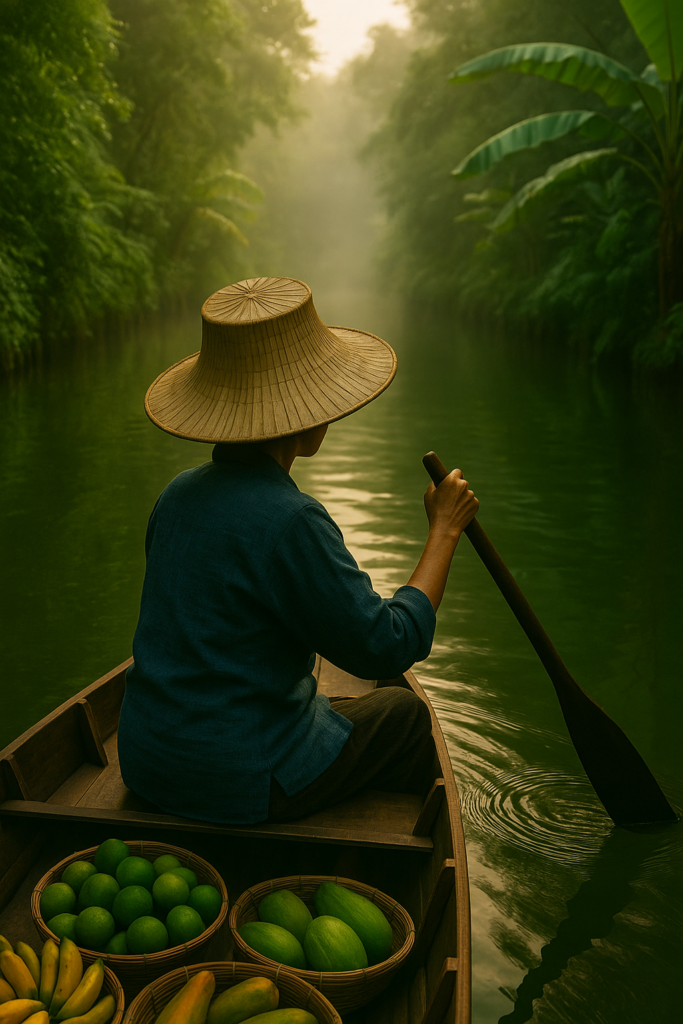
The Art of Simplicity
There’s an artistry to how each boat is arranged. Look again at the photograph — the symmetry, the color balance, the textures. Everything has been placed with care, not by accident but by instinct born of years of practice.
Farmers know how to display their goods not just for sale, but for beauty. The contrast between green cucumbers and yellow bananas, between pink flowers and wooden planks, is both functional and aesthetic. It draws the eye, invites appreciation.
This is what makes floating markets feel like moving galleries. Every boat is a composition. Every arrangement is an expression of pride and patience. The market becomes a living canvas, painted fresh each morning and gently erased each night when the boats return home.
A Glimpse of Timelessness
Though technology and tourism have touched these markets, their essence remains unchanged. The same techniques used a hundred years ago still guide them today. Wooden paddles, handmade baskets, local produce, barter over cash — traditions endure because they work.
The image before you could have been taken yesterday or decades ago. That’s the power of timeless beauty — it transcends years and trends. You could replace the fruit with today’s harvest or tomorrow’s, and the picture would still tell the same story: humans and nature, intertwined.
In many ways, the floating market is a metaphor for life itself — always moving, always renewing, yet deeply rooted in tradition.
The Photographer’s Dream
For photographers, floating markets are paradise. The combination of color, motion, light, and reflection offers endless possibilities. The early morning light casts golden highlights on the water. Mist softens the edges. Reflections create mirror images that blur the line between real and imagined.
The photograph you see is perfectly timed. The soft focus, the layered perspective of boats receding into the distance, the lush framing of tropical foliage — it’s cinematic and intimate at once. It captures not just what floating markets look like, but what they feel like: warm, rhythmic, and profoundly alive.
It’s no wonder images like this travel far across the world, inspiring wanderlust and admiration. They remind us that travel isn’t just about places — it’s about presence.
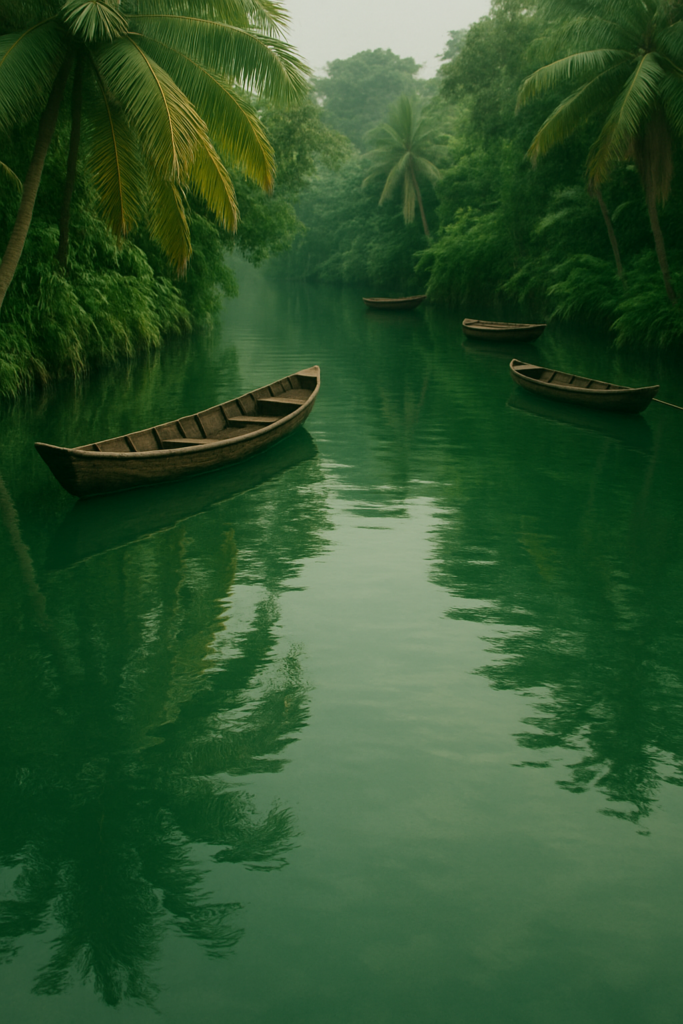
A Living Heritage
As tourism grows, many floating markets have adapted — some now cater to visitors as much as locals. Yet, beneath the surface of souvenir stalls and cameras, the heart remains the same. The people who row these boats continue to live by the rhythm of water and season.
Governments and communities across Southeast Asia are working to preserve these markets, not as relics but as living culture. They represent resilience — the ability to thrive in harmony with the environment.
When you see this photograph, you’re not just looking at fruit and flowers — you’re looking at a way of life that has survived centuries of change. The wooden boats carry more than produce; they carry identity.
Reflections on Water and Humanity
There’s a quiet lesson in this scene. The water reflects everything — sky, trees, boats, people — reminding us that we, too, are reflections of our surroundings. The floating market shows how deeply humans can live in balance with nature when we listen instead of dominate.
Every paddle stroke, every fruit sold, every flower arranged is part of a greater rhythm — one that sustains both land and soul. The image doesn’t just show a market; it shows a philosophy: that beauty, community, and nature can coexist gracefully.
Conclusion: The Flow of Life
The photograph of this floating market captures more than a scene — it captures an entire worldview. It tells of people who live with water, not against it. Of trade that feels like ritual. Of colors that tell stories, and traditions that flow through generations like the rivers themselves.
There’s peace in the way the boats drift, color in the way life unfolds, and wisdom in the way everything connects. It’s a reminder that the simplest things — fruit, flowers, water, and light — can create the most profound beauty.
In a world that moves too fast, the floating market teaches us to drift, to flow, to breathe. It shows us that life, like water, finds its balance when we move with it, not against it.
The scene is not just a picture of Southeast Asia — it’s a portrait of humanity at its best: rooted in tradition, alive with color, and guided by the quiet grace of nature.
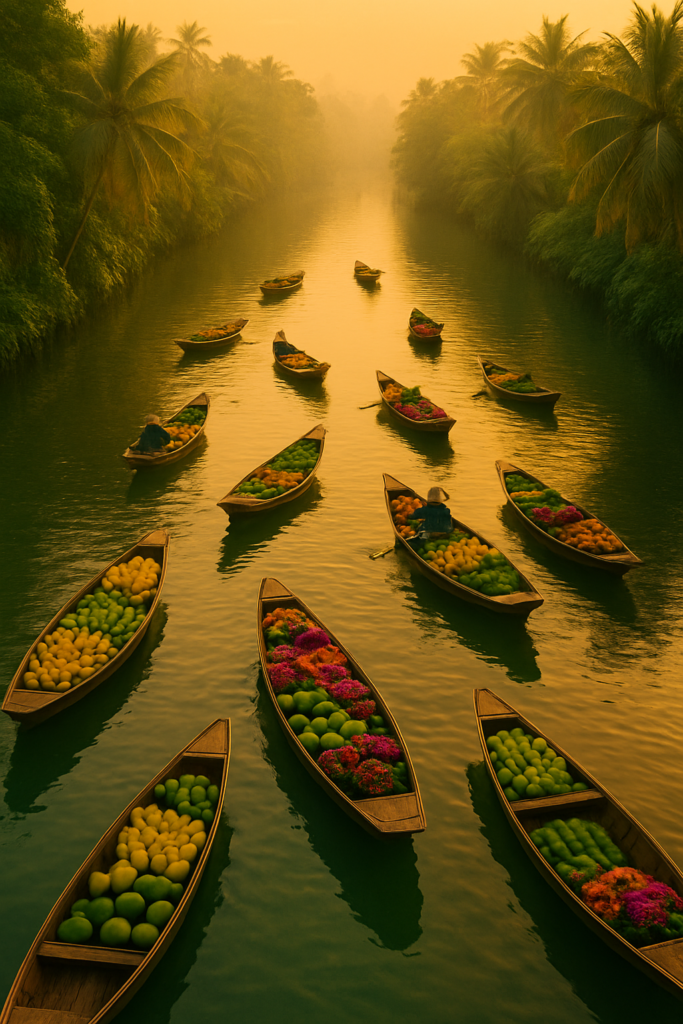

Leave a Reply